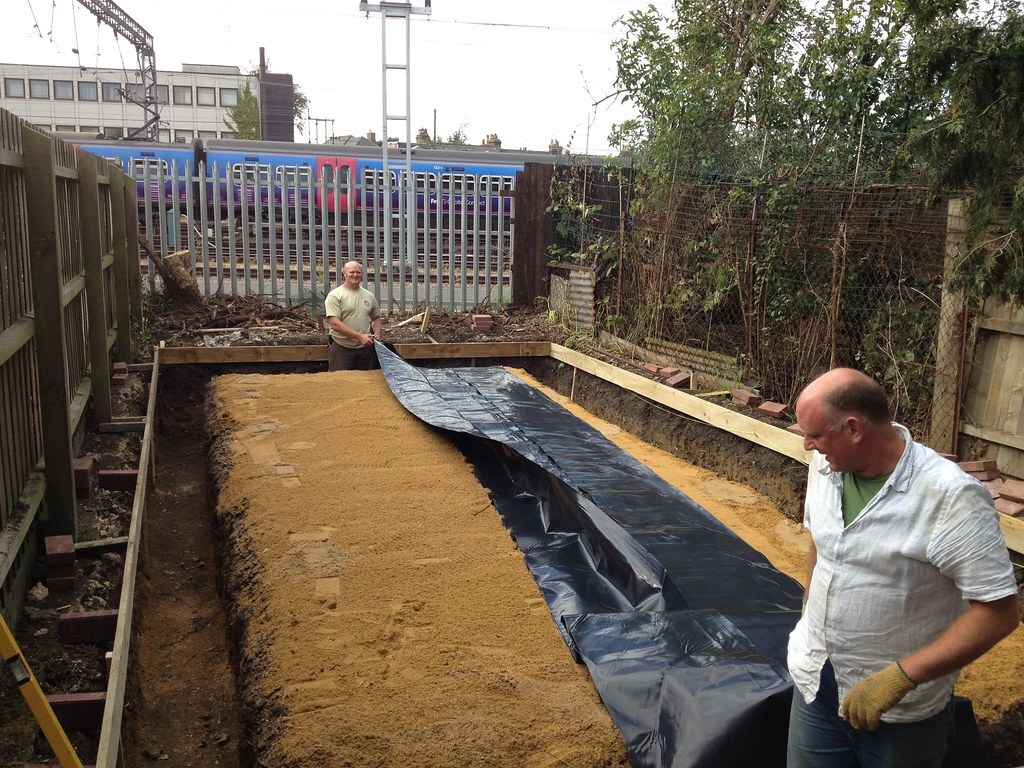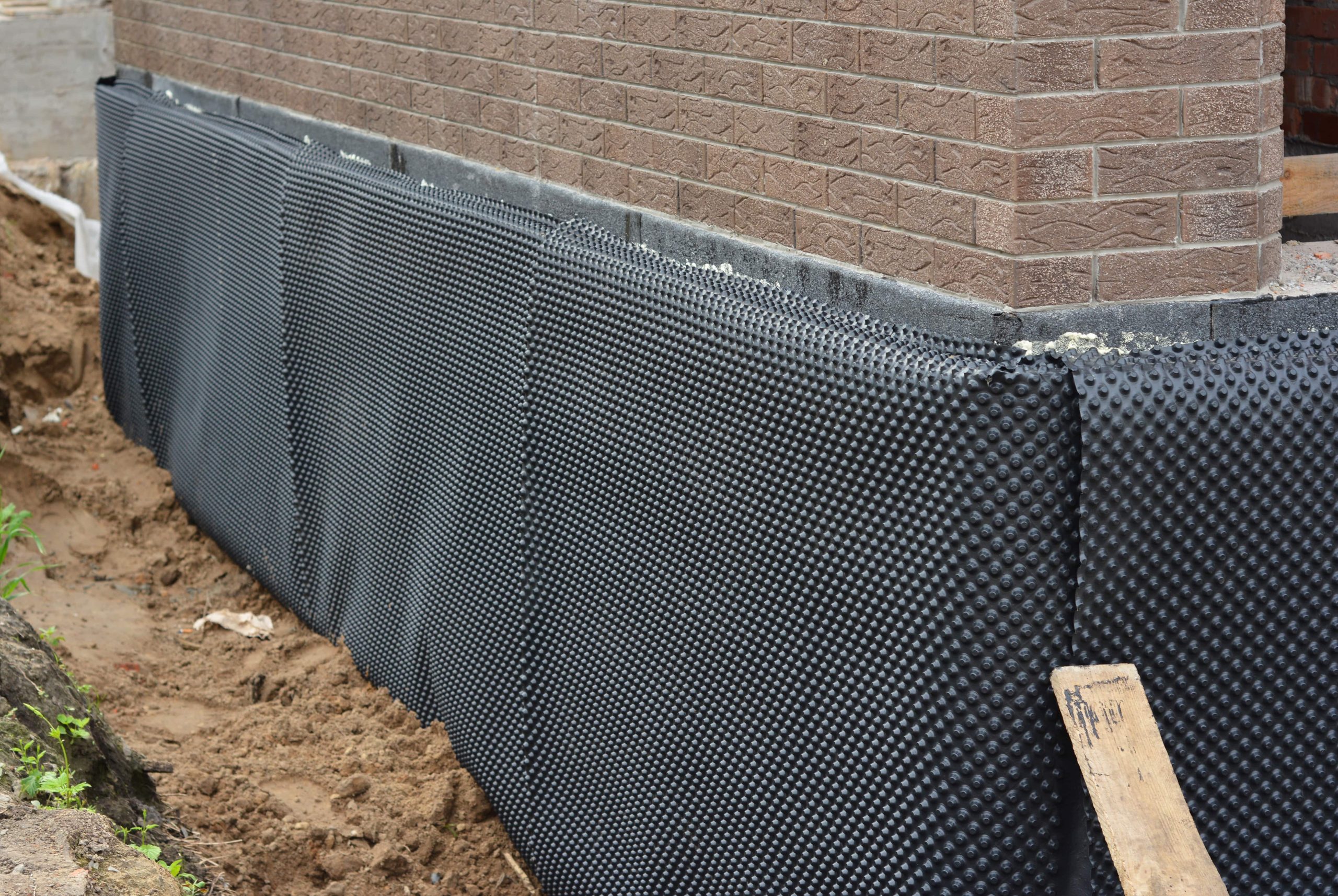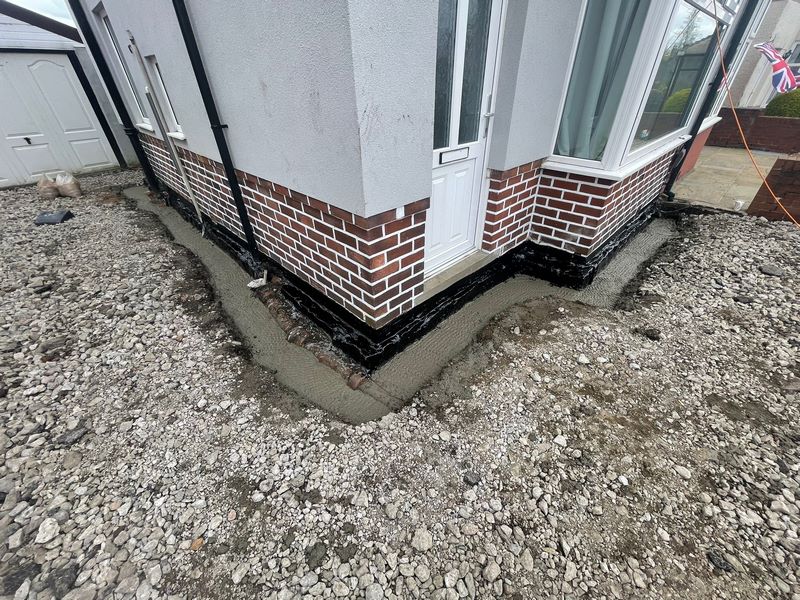Checking Out the Various Strategies and Solutions for Effective Damp Proofing
Moisture in structures postures significant difficulties to both architectural stability and indoor air top quality. Various methods and options have actually arised to fight this prevalent issue. From traditional damp-proof membranes to innovative chemical therapies, each method uses special advantages. Comprehending these choices is important for efficient moisture control. Choosing the right remedy depends on particular structure problems and requirements, prompting more exploration right into the most reliable damp proofing approaches available.
Understanding the Root Causes Of Moisture
Wetness can arise from numerous resources, comprehending these reasons is important for efficient removal. Typically, wetness originates from three main resources: climbing moist, permeating damp, and condensation. Increasing wet takes place when groundwater travels up through porous materials, such as brick or stone, commonly due to a lack of an efficient obstacle (damp removal newcastle). Permeating damp is normally caused by outside elements, including roofing system leaks, faulty seamless gutters, or damaged wall surfaces, allowing water to penetrate a residential property. Condensation, on the other hand, results from excess wetness airborne, frequently exacerbated by inadequate air flow and temperature level distinctions, resulting in water droplets developing on surface areas. Recognizing these underlying issues is important, as each kind of moisture needs a customized method for remediation. Correct assessment assists in figuring out the most effective remedies, eventually guarding the architectural stability of a building and enhancing interior air quality
Traditional Damp-Proof Membranes

Chemical Damp-Proofing Solutions
Chemical damp-proofing solutions provide an innovative technique to stop wetness invasion in buildings. These approaches commonly involve the application of fluid chemicals that pass through masonry and create an obstacle versus increasing moist. Frequently utilized chemicals consist of silanes, siloxanes, and other water-repellent representatives that respond with surface products to develop a hydrophobic layer.The application process generally requires boring openings into the walls, infusing the chemical remedy, and enabling it to treat. This technique is specifically advantageous for older frameworks where conventional damp-proof membranes might be impractical. Chemical damp-proofing can be less turbulent and a lot more economical than considerable remodelling projects.While effective, these remedies depend on correct application and ecological problems for peak efficiency. damp proofing newcastle. Routine maintenance and tracking are important to guarantee the long life of the damp-proofing therapy. Generally, chemical damp-proofing stands for a flexible choice for securing structures against moisture-related damages
Tooth Cavity Wall Surface Construction Techniques
Cavity wall building techniques offer various benefits, especially in wetness control and power performance. By integrating an air void in between two layers of stonework, these wall surfaces properly mitigate water ingress while improving insulation. This combination not just protects structures from dampness but additionally adds to reduced power consumption.
Advantages of Dental Caries Walls
When thinking about efficient wet proofing methods, the benefits of tooth cavity walls stand out prominently. Cavity walls contain 2 separate layers, producing an air space that successfully decreases moisture infiltration. This style minimizes the threat of wetness, as the external wall serves as a barrier against rainfall and water ingress. Furthermore, dental caries wall surfaces boost thermal insulation, which contributes to energy efficiency by lowering warm loss. They additionally give audio insulation, helping to create a quieter interior setting. In addition, the air gap permits ventilation, which assists in moisture control and decreases the likelihood of mold and mildew development. These advantages not only enhance the overall comfort of a building however also contribute to its long life and structural stability.
Moisture Control Techniques
Effective moisture control strategies are essential in cavity wall surface building to ensure lasting security versus wetness. One main method includes the unification of weep holes, which facilitate water drainage from the dental caries, preventing accumulation. Furthermore, using breathable membrane layers can help manage wetness degrees while enabling caught vapor to run away. Correct placement of insulation is likewise crucial, as it needs to not obstruct drainage paths. Moreover, guaranteeing that the outer fallen leaves of the tooth cavity wall surface are constructed with waterproof products enhances general resilience. Normal maintenance checks are important to recognize any kind of obstructions or damages early, safeguarding the structure's integrity. Eventually, a combination of these techniques forms check here a robust defense versus wetness invasion in cavity wall surfaces.
Insulation and Power Performance
Insulation plays a crucial duty in boosting power performance within cavity wall building. By incorporating shielding materials, these wall surfaces create a thermal barrier that lessens warm loss and reduces energy usage. Efficient insulation not just assists preserve a secure interior temperature level yet likewise minimizes the threat of dampness, as it avoids condensation within the wall surface dental caries. Different methods, such as making use of inflexible foam boards or mineral wool, can be employed to accomplish suitable insulation performance. Additionally, proper installation is important to guarantee that spaces and voids are lessened, which can otherwise compromise energy effectiveness. Eventually, a well-insulated cavity wall contributes substantially to total sustainability and decreases home heating and cooling expenses for home owners.
External Damp Proofing Approaches
Exterior damp proofing approaches are essential for safeguarding structures from moisture infiltration. Two effective strategies include the application of water resistant membranes and the setup of French drains pipes. These solutions help reduce water buildup and protect the stability of buildings.
Waterproof Membrane Application
While various approaches exist for stopping wetness ingress, the application of waterproof membrane layers stays a highly efficient exterior wet proofing method. These membranes are generally made from materials such as polyethylene, rubber, or customized asphalt, offering a durable obstacle versus water infiltration. The installment procedure includes using the membrane to the outside surfaces of structures or walls, making sure full protection to stop leakages. Correct attachment and securing at joints are important to optimizing effectiveness. Waterproof membranes can be applied in numerous kinds, consisting of fluid finishings and sheet membrane layers, permitting for adaptability based upon the specific requirements of the structure. This method not only secures structures from moisture however likewise enhances their longevity and structural integrity.
French Drain Installation
One effective approach for taking care of groundwater and avoiding dampness buildup around a structure's foundation is the installment of a French drainpipe. This drainage system contains a trench loaded with crushed rock and a perforated pipe that redirects surface water far from the structure. Correct setup needs cautious preparation, making sure that the drainpipe inclines away from the structure to assist in ideal water flow. In addition, the area of the drainpipe is essential; it needs to be placed in locations susceptible to merging or excess dampness. Routine upkeep, including clearing particles from the gravel and ensuring the pipe remains unblocked, is important for long-term performance. Inevitably, a well-installed French drainpipe can substantially minimize the risk of water-related concerns in cellars and structures.
Inside Waterproofing Techniques
Inside waterproofing approaches are vital for safeguarding a structure's interior from wetness infiltration and possible water damage. These techniques generally involve the application of customized products and strategies made to develop a wetness barrier within the framework. One usual approach is making use of water resistant layers or sealers on walls and floors, which avoid moisture from passing through surfaces.Additionally, installing indoor drainage systems, such as sump pumps, can efficiently manage water buildup in cellars and crawl spaces. Another method entails the use of vapor barriers, which are mounted to prevent dampness motion from the ground into living spaces.Moreover, resolving any kind of splits or gaps in wall surfaces or foundations with appropriate sealers assures a detailed defense against water breach. By executing these indoor waterproofing strategies, residential or commercial property owners can greatly minimize the danger of mold development, architectural damages, and various other moisture-related problems. Correct execution of these methods is essential for long-term protection and building honesty.
Normal Maintenance and Inspection Practices
Regular maintenance and inspection practices are important for guaranteeing the long-term efficiency of damp proofing solutions in any building. Routine checks enable homeowner to determine very early indicators of wetness breach, such as peeling paint, mold growth, and moldy smells. These indicators can indicate underlying problems that need prompt attention.Inspections need to be carried out a minimum of every year, concentrating on vulnerable areas like cellars, crawl spaces, and exterior walls. Throughout these analyses, homeowner should analyze sealers, water drainage systems, and air flow to confirm they function correctly.Additionally, preserving gutters and downspouts is crucial, as blocked systems can result in water buildup near the structure. Executing a routine upkeep timetable, along with timely fixings, can significantly prolong the life expectancy of wet proofing steps and protect the architectural honesty of the structure. Positive procedures inevitably add to the total health and wellness of the living environment.
Regularly Asked Inquiries
For How Long Does Damp Proofing Commonly Last?
The period of moist proofing efficiency differs, usually lasting between 20 to 50 years. Elements such as application quality, ecological problems, and maintenance techniques greatly affect the longevity of the moist proofing therapy.

Can I Damp Evidence My Home Myself?
The private pondered the usefulness of do it yourself damp proofing. With appropriate study and the appropriate materials, it is possible. However, they additionally identified the significance of specialist support to assure resilient effectiveness and protect against future issues.
What Are the Indications of Inefficient Damp Proofing?
Indicators of inadequate damp proofing include persistent mildewy odors, visible mold development, peeling off paint, moist patches on wall surfaces, and wood decay - damp removal newcastle. House owners must address these problems immediately to stop further damage and health concerns
Does Damp Proofing Affect Indoor Air Top Quality?

Exactly How Much Does Specialist Damp Proofing Cost?
Specialist wet proofing prices vary significantly, generally varying from $1,000 to $5,000 relying on the property's dimension, the degree of the wet problem, and selected techniques. Each circumstance requires a tailored assessment for exact rates. Generally, dampness originates from three primary sources: rising wet, permeating moist, and condensation. When considering effective wet proofing techniques, the benefits of dental caries wall surfaces stand out prominently. Outside moist proofing techniques are necessary for protecting frameworks from moisture seepage. While different approaches exist for preventing moisture ingress, the application of water resistant membrane layers stays a highly efficient outside damp proofing method. Indicators of inadequate damp proofing consist of persistent moldy smells, noticeable mold development, peeling off paint, wet patches on walls, and wood degeneration.
Comments on “Understanding the cost of professional damp removal newcastle”